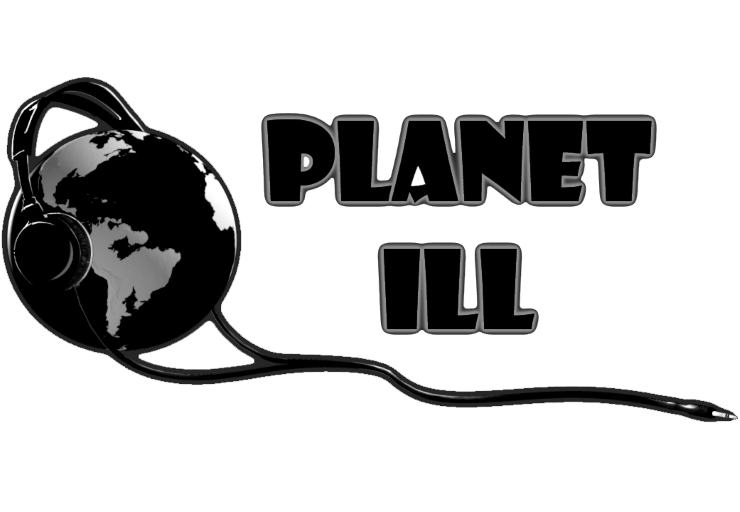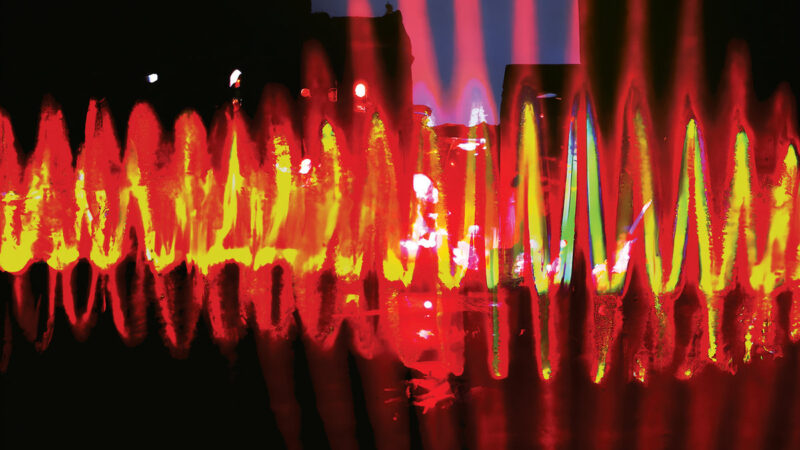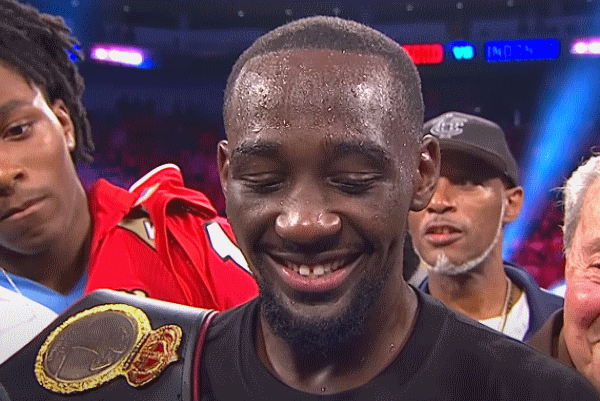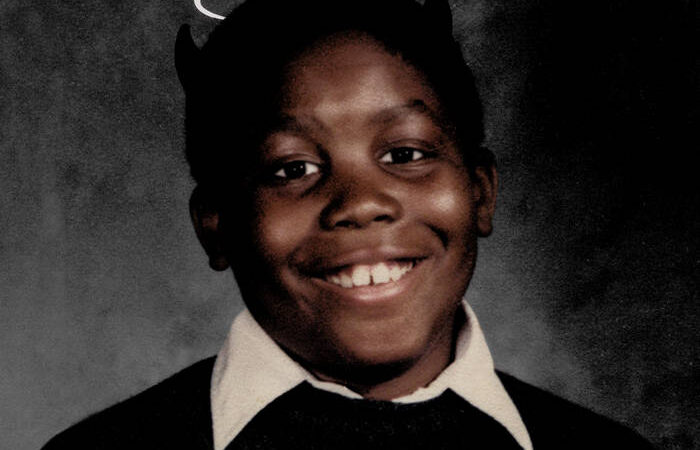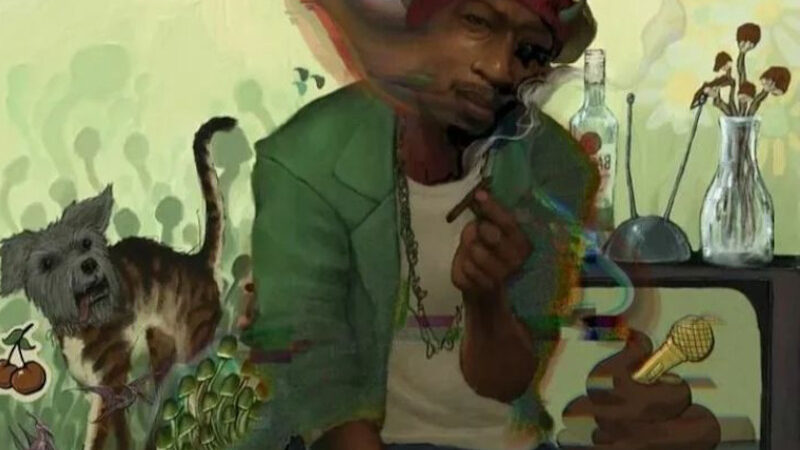By 1987, the crack epidemic was a fixture on the nightly news, and in rap music. Many artists who had hit singles the previous year released full length albums and in the process, they would establish gangsta music as much more than just a passing fad. Crack cocaine had America shook, and Hip-Hop was more than happy to exploit the situation.
In 1986, “South Bronx” made Boogie Down Productions notorious by touching off the fabled “Bridge Wars.” Their debut LP, Criminal Minded, proved more shocking than anything on their landmark first single. The album’s cover art featured KRS-1 and Scott La Rock sitting at a table wearign jewelry and flaunting money and guns. Both brandished firearms, which was a first for a rap album cover. It was comically over the top, but effective.
The album’s content reflected its packaging, particularly the song “9mm Goes Bang.” It was pure outlaw bravado. KRS has a dispute with a crack dealer over a woman, and ends up killing him. Later on, while he’s chilling at the weed spot, the crack dealer’s crew comes gunning for him. He gets the drop on his assailants, killing them all. He then regroups with Scott La Rock and recounts the day’s excitement. There’s no moral to the story, and none of it is delivered in a cautionary fashion.
Album covers became canvasses for reflecting the changing sentiments of Hip-Hop as rappers began to morph into crack dealers. On their genre-bending debut LP Paid In Full, Eric B & Rakim wore truck jewelry and sported custom tailored outfits from Dapper Dan while flashing stacks of crispy hundred dollar bills. The album’s content focused mostly on Rakim’s lyrical prowess, but the imagery sent a slightly different message.
Elsewhere on Strong Island, Public Enemy made a more subtlety menacing statement with the cover of their single “You’re Gonna Get Yours.” It showed group members posing in front of a trio of Oldsmobile 98’s, with a few of them brandishing small caliber pistols sans the Black Nationalist sentiment that characterized their later work. It was an early example of them toying with, and casually exploiting, America’s collective fear of Black males.
The cover of N.W.A’s single “Panic Zone” conveyed a similar sentiment, with group members and affiliates huddling together in a graffiti strewn alley. Some of them were holding bottles and cans of malt liquor. The image was recycled later that year for the Macola records compilation N.W.A & The Posse, often mistaken as the group’s debut. It actually did contain a couple of songs that would appear on Straight Outta Compton. One was “Dopeman,” which told of how neighborhood crack dealers profit from pain, often accepting sexual favors for crack. It was brash, profane, and darkly humorous. The other was “8 Ball,” on which Eazy-E extolled his love for Old English Malt Liquor. The song helped solidify Eazy’s dual image as both court jester and fearsome villain.
In November of 1987, Ice-T released his debut Rhyme Pays, one of the first albums to carry an “explicit lyrics” sticker, thus making him a poster boy for such things. For a time, he would share that distinction with the likes of Too $hort, the 2 Live Crew, and N.W.A.
Just-Ice’s sophomore release, Kool & Deadly (Justicizms) teamed him with KRS-1, who continued to indulge the themes established on Just Ice’s first album, including flirtations with Dancehall Reggae, hardcore posturing, and sexually explicit lyrics. The cover features him grimacing menacingly with a mouth full of gold fronts. It was a photo only Mike Tyson could love.
In 1987, there were 387 gang related homicides in L.A. County. On April 15th, 1988, the film Colors opened across the country. It dramatized the situation, showing two uniform police officers contending with warring gangs on the streets of L.A. It was the first major motion picture to feature the Bloods and Crips. The film made 4.8 million at 422 theaters, however, the opening was marred by incidents of violence. Thirteen alleged gang members were arrested at two Los Angeles area theaters showing the film. Three Southland theaters anticipated the violence in advance, cancelling their exhibition contracts. Both the NAACP and the Guardian Angels held protests in L.A, Chicago, and New York.
The film’s soundtrack was replete with hardcore Hip-Hop, showcasing a number of rap acts under the Warner Brothers umbrella. Ice-T did the film’s chilling theme song, which perfectly captured the civil war raging on L.A. streets and in California prisons. Long before Wocka Flocka Flame and Lil Wayne were claiming Blood, Ice T was spitting lines like this:
Red or Blue, Cuz or Blood, it just don’t matter
Sucker die for your life when my shotgun scatters
The gangs of L.A. will never die – just multiply
Thanks to Hip-Hop and Hollywood, the L.A. gang wars were now front page news. Later on that year, Straight Outta Compton would perfectly play on the fears aroused by Colors. They didn’t plan to change the world but that’s exactly what they did. Group member M.C. Ren, a huge fan of Boogie Down Productions and Ice-T, claimed that he and his group mates were simply trying to make a name for their hometown. They achieved that and then some. The album played like the manifesto of an emerging L.A. gang set.
The album’s most inflammatory song by far was the shocking protest anthem “Fuck tha Police,” a poison pen letter to the boys in blue accusing them of cowardice, racism, and genocide. So vitriolic was the song’s sentiment, that it drew the ire of the Secret Service and the F.B.I. Director Milt Alerick, who sent an angry letter to the offices of Ruthless Records. The group became infamous, and the album sold millions of copies with no help from radio. Ditto Eazy-E’s debut, Eazy-Duz-It, released a month later.
The crack epidemic began to peak in 1989. On January 30th, Too $hort released his fifth album, Life Is…Too Short, which proved to be his commercial breakthrough, selling millions of copies with little mainstream awareness. Though more infamous for its sexually explicit content and trunk-ready beats, $hort still maintained an eye for social blight, as evidenced by tracks such as “City of Dope.” On March 12th, The Geto Boys released their second album, Grip It! On That Other Level , featuring a revamped lineup of Scarface and Willie D, which toyed with similar subject matter as N.W.A, while exhibiting a much greater capacity for shock value.
By the close of the 1980’s, the West Coast had wrested the spotlight from their East Coast brethren, largely due to the success of gangsta rap (as it was then coming to be known). New Yorkers, still caught up in Black Nationalism and political consciousness, looked down their collective noses at the phenomenon. Little did they know, the sickness had already infiltrated the five boroughs. In 1989, Belizean immigrants moved to New York City and formed the Harlem Mafia Crips. It was a sign of things to come. Throughout the 1990’s, East Coast rappers would adapt to the changing landscape, further solidifying the union of gangsterism and hip-hop.
Follow Malice Intended on Twitter @ http://twitter.com/renaissance1977
Follow Us on Twitter @ http://twitter.com/planetill
Join Us on the Planet Ill Facebook Group for more discussion
Follow us on Networked Blog
